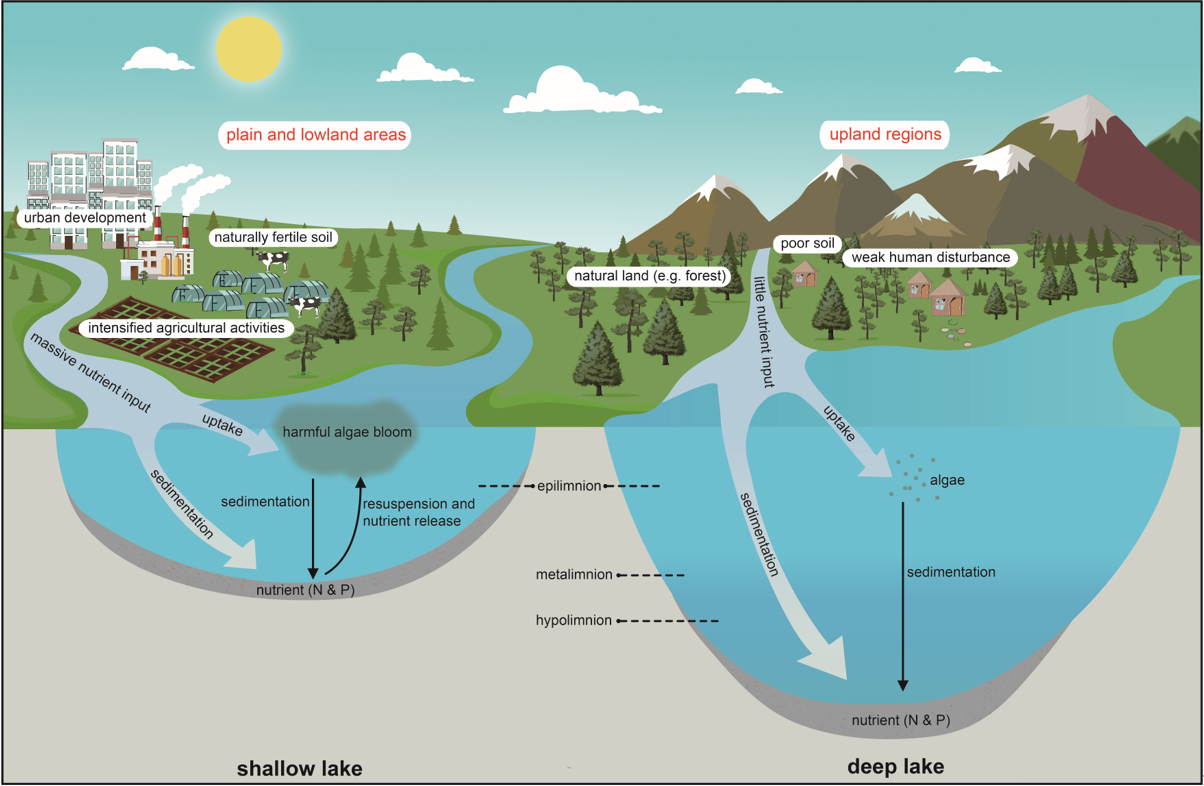
Anthropogenic eutrophication of lake ecosystems is a global problem, especially for some large shallow lakes. But scientists have been unclear why shallow lakes appear prone to eutrophication.
Now researchers led by Prof. QIN Boqiang from the Nanjing Institute of Geography and Limnology of the Chinese Academy of Sciences (NIGLAS) have provided clues to this question.
Their findings were published in Water Research on June 9.
The prevalence of lake eutrophication varies with respect to watershed geology, climate, land use, landscape position, connectivity, and lake morphology, each of which varies with lake district or ecoregion.
In this study, the researchers analyzed 1,151 lakes with areas over 0.5 km2 located in Europe and the USA to identify how lake morphology and regional social-ecological systems interact to affect the susceptibility of lakes to anthropogenic eutrophication.
They found that lake depth is linked to the ecoregion and land use of lake ecosystems. These factors largely determine the intensity of human activity and, consequently, lake productivity.
Generally, shallow lakes lie in naturally fertile plains and lowland regions where they are exposed to strong anthropogenic disturbances (e.g., agriculture and urban development). They are predisposed to receive large quantities of nutrients due to extensive drainage networks. In contrast, deep lakes are frequently concentrated in poor upland regions (i.e., mountains and highlands) with mainly natural land cover (e.g., forest and shrubland), low degrees of human disturbance, and limited nutrient input.
Compared to deep lakes, shallow basins often have a small volume and weak capacity to dilute input nutrients, resulting in high sensitivity to anthropogenic forcing. In addition, strong water-sediment interactions are more common in shallow lakes and sediment is more prone to resuspension in such lakes, leading to elevated internal nutrient loading and higher productivity.
All in all, the scientists discovered that lake depth appeared not only to predict external nutrient load to the lake; it was also related to sensitivity to anthropogenic disturbance, with shallower lakes being more sensitive.
"Shallow lakes in agricultural or populated regions may be particularly susceptible to eutrophication and their eutrophication may be not an occasional occurrence," said Prof. QIN.
He said shallow lakes should be given "special attention" because of their high risk of water quality degradation and eutrophication. He also noted that they may be more resistant to restoration compared to deep lakes.
By clarifying the influences on eutrophication, this study may help promote the protection and restoration of lakes globally.

External nutrient input and in-lake biogeochemical processes that regulate the productivity of lake ecosystems are related to lake depth. (Image by NIGLAS)

86-10-68597521 (day)
86-10-68597289 (night)

52 Sanlihe Rd., Xicheng District,
Beijing, China (100864)

